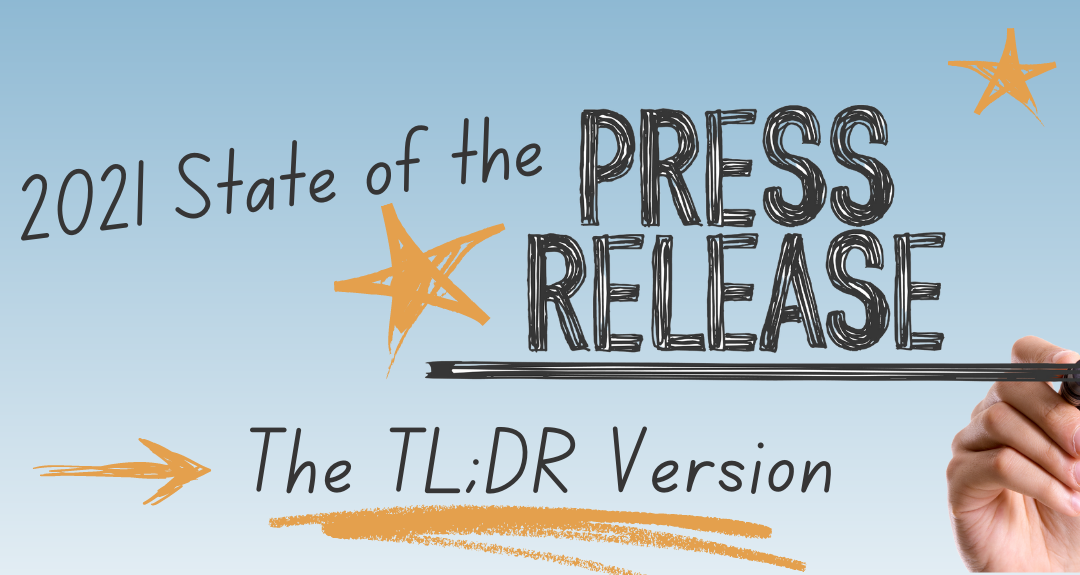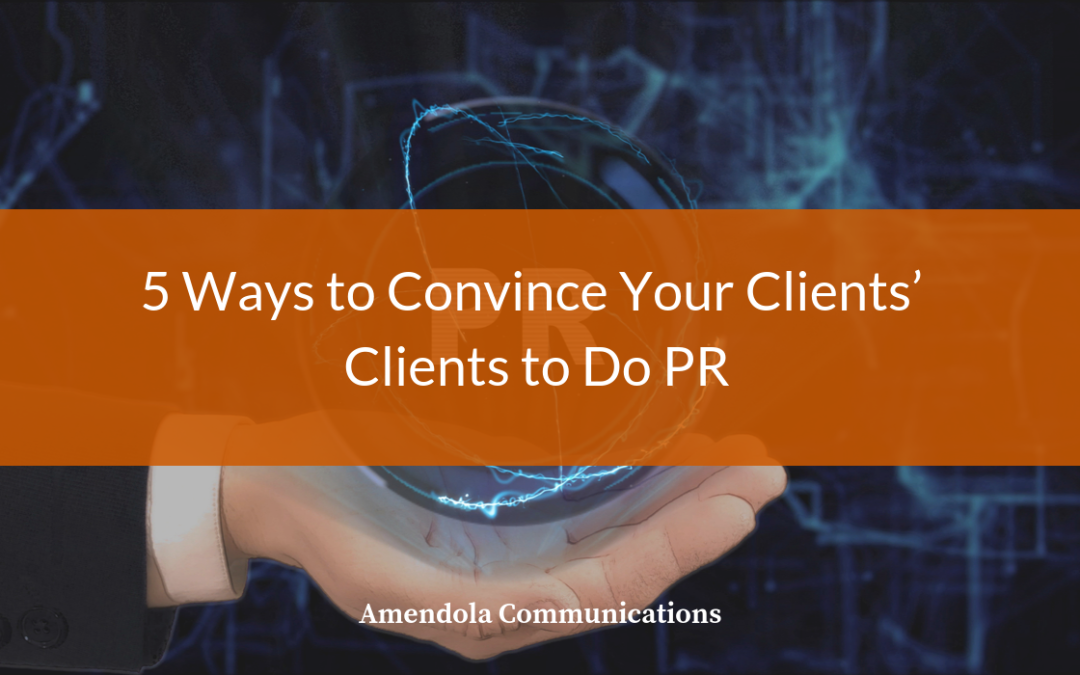
by Jim Sweeney | Jul 10, 2024 | Blog
Hey, want to hear an announcement from my company?
Or,
Hey, want to hear a story?
Which got your attention?
If you’re human, it was probably the latter.
We are hardwired to listen to and learn from stories. From the earliest days of painting on cave walls through Aesop’s Fables and TEDx Talks, stories have proven themselves to be the best way to convey information to an audience. Even business information. Write a memo reminding people to always file their TPS reports with a cover sheet and they’ll ignore it. Tell them a story about the coworker who got fired for forgetting the cover sheet and they’ll remember.
But we largely abandon the power of narrative when it comes to press releases, which tend to be dry recitations of facts fleshed out with manufactured quotes and a corporate boilerplate.
For years the standard thinking on press releases has been to cram as much of the important information as possible up top on the theory that journalists won’t read past the headline and opening paragraph. There is merit to this approach if you’re announcing something truly significant or newsworthy, like a corporate merger or a new iPhone.
But, if we’re being honest, that’s the minority of releases. In most cases, the news isn’t a big enough deal to sell itself. So we, as PR practitioners, need to sell it. And stories are the best way to do it. A compelling story wrapped around a somewhat-less compelling piece of news can make an irresistible package.
Here’s an example: A chemical company wanted to announce a new polymer that would be used to line the surfaces of artificial joints. That could have been a straightforward product announcement, but I wanted to humanize the impact of the product, so I focused on the recipients of the artificial knees and hips, not the polymer itself.
I found Senior Olympics basketball players, each of whom had at least one artificial joint, and shot a video of them playing and talking about how grateful they were for the technology that let them hoop it up into their 80s. It was a step or two removed from the actual product, but it brought home the idea that this polymer had real benefits for people.
For the most part, Amendola clients are B2B and work in healthcare IT, which doesn’t easily lend itself to narrative. However, like with the above example, it’s often possible to bring it to the level of the patients and users of the technology. What does new perioperative scheduling software accomplish? Fewer delays and cancellations in scheduling surgeries, which is good for patients and clinicians. How about a new staffing platform for nurses? It gives them greater flexibility and allows them to earn more money.
Sometimes the narrative can be built around a single illuminating fact. I wrote a press release for a company whose seals were to be used on the Mars Rover. In and of itself, not that big a deal; scores of manufacturers had components on the Rover. What I learned from talking to company engineers is that it is impossible to build a seal that doesn’t leak, particularly in space; success is building a seal that leaks very, very slowly. How slowly? In this case, so slowly that it would take 1,000 years to empty a Coke can.
In the release, I told the story of these engineers working toward this ridiculously exacting specification. And it got picked up more than the dozens of cookie-cutter announcements that went out from other parts suppliers.
Of course, the stories must be interesting and short. They can’t meander and they can’t obscure the news. And they must be relevant. Don’t announce a brand of hard seltzer by telling a story about how a surfer took on a 50-foot wave and then enjoyed a can of seltzer back on the beach. Save that for the commercial.
Most press releases vanish with little notice or impact, like gnats flying into a bug zapper. But tell a good story, and people will remember it.

by Brandon Glenn | Nov 10, 2021 | Blog
There are a few yearly traditions Americans rally behind and await with eager longing and hushed anticipation – birthdays, holidays and the publishing of Cision’s “State of the Press Release” report.
The 2021 version of this annual 20-something-page paean to the press release – brought to you by the people who profit the most from press releases, it bears keeping in mind – recently arrived on our virtual doorstep. As is the hallowed tradition in these parts, we read the report and summarize it below to save you the anguish, remorse and indignity.
The report is the result of Cision’s examination of more than 100,000 press releases from the prior year, coupled with a survey of PR pros about their press release practices. For those of you who find the full report too long and do not want to read it (TL;DR), here are five key take-aways to consider:
- In terms of volume, the industry has returned to a pre-COVID-19 level of “normal”: Seventy-four percent of respondents said that their press outreach was either on par or more frequent than before COVID or not impacted by the pandemic at all.
- Thought leadership releases represent an opportunity for some companies (and a business development opportunity for Cision): As virtually anyone familiar with the concept of a press release knows, the primary reason (83%) companies distribute them is to share business news. Cision notes that just 47% of companies use press releases to share thought leadership content, such as research, data, tips and best practices. Other leading reasons for issuing press releases include: product launches (40%); diversity, equity and inclusion (25%); and corporate social responsibility (19%).
- For headlines, less is more: Certainly, headlines are critical to a release’s messaging, and Cision recommends keeping them fewer than 70 characters. Email applications and Google’s search engine will cut off any text over that amount, according to Cision.
- Mind your action verbs: The verb “announce” is popular in headlines but doesn’t generate a commensurate amount of page views. “Launch” is also widely used but performs proportionately better with its usage. Also consider “show,” “roll out,” “reveal,” and “allow.”
- Check it twice: Not surprisingly when dealing in the written word, Cision found thousands of errors in “final” releases sent by clients. The most common types of errors include: hyperlink errors, misspellings, incorrect dateline dates, grammar mistakes and day/date discrepancies.
What will 2022 hold in store for the state of the press release? The sheer possibilities almost exceed the human capacity for thought (or at least mine) but be sure to return here next year to learn all about it. Until then, our nation turns its lonely eyes to you, Cision.

by Margaret Kelly | Oct 28, 2020 | Blog
Most journalists (36%) still receive their news from the good old press release. As a PR professional, you are responsible for getting the news your client wants to disseminate in front of as many relevant people as possible.
But in 2020 when the usual news topics have been turned on their head, how do you do that?
PR Newswire – a Cision company – released its State of Press Release report which noted that 48% of all releases issued between March and May 2020 mentioned COVID-19.
The report also provided these statistics when comparing 2019 and 2020 news topics:
- Future events news dropped 56%
- Trade show news releases dropped by 77%
- Public safety news increased by 192%
- Corporate social responsibility releases increased by 118%
- News about infectious disease control saw a huge jump of 3,140%
If your client’s release is either in a category that isn’t being discussed, or included in a topic that’s likely to get lost in the shuffle, how do you ensure yours stands out?
Here are seven tips to give you an edge.
1. Start at the top with a short, newsy headline. A short and catchy headline is where you capture audience attention. After all, when you scroll through a newspaper, social media platform, or newsletter, what is it that makes you decide which articles to read?
The average headline length for a press release is 88 characters. Keep headlines short and sweet, and if it’s absolutely necessary for a longer headline, ensure the important keywords are in the first 70 characters because this is where Google search engine results and email subject lines cut off.
2. Use strong call-to-action words. According to the PR Newswire / Cision State of the Press Release report, these are the top 10 CTA headline words:
- Confirms
- Reveals
- Proves
- Launches
- Empowers
- Enables
- Allows
- Announces
- Rolls Out
- Shows
3. Select the right newswire company. At our agency, we have been working with PR Newswire for many years. We have experience with all the wires, but we feel this company has an edge.
Not only do they have superior customer service, their wires syndicate to more outlets than any other. Additionally, they have a service in which editors pay to subscribe to their wires.
It gives those looking for news the chance to eliminate a mass download to their inbox, and it provides search terms. Therefore, when we set up releases to be sent on the wire, we use an option provided by PR Newswire, in which we “code” for keywords and trades. This allows the right people to find the news they are actively looking for to write into their story lines.
4. Pick the right time to send your news. According to Cision, the highest volume of news is sent at 8 AM ET, Mondays through Thursdays with Tuesday being the highest day of release traffic. 52% of copy is sent at the top or bottom of the hour.
So, to stand out from the flood of releases being pushed, yours should be sent either before or after 8 AM ET. If you’re looking to maximize your visibility, the best days are Tuesday, Wednesday, or Thursday in the middle of the day. Use odd times like 9:05 am, or 1:10 pm.
5. Make content informative and engaging. The average press release according to Cision’s data, is 686 words and readers spent 3 minutes and 39 seconds. But it won’t get read at all if it doesn’t interest the media. This blog post by my colleague Michelle Noteboom provides tips for tweaking your message to ensure the audience hears you – during COVID-19 and beyond.
6. Don’t rely on the wire alone – pitch away! Hopefully, you’re working with an experienced PR agency who has a great media relations team. I pulled this entire paragraph from Cision’s report because I found it compelling:
“For the first time in Cision’s State of the Media Report history, we asked reporters to share what days they receive pitches most and what days they actually prefer getting them. As many of us expected, Mondays proved to be the preferred day for reporters, and it was also when they got pitches most. However, many journalists reported they were still open to receiving pitches until Friday (a handful even on Saturday and Sunday). As the week progresses though, the number of pitches they receive declines. While their interest in receiving pitches did slightly decrease, the numbers weren’t so significant that it should prevent publicists from reaching out.”
7. Look outside the box for other ways to promote your news. Ensure the client is posting the release on their website. Use your social media team to create multiple, engaging posts for all the client’s social platforms. And if your client is a member or sponsor of any publication or trade organization, find out if benefits include posting corporate news.
New hire announcements, contract wins, and product launches all make for news-worthy events. In the world of health and health IT, we look to publications such as HIStalk, Answers Media and DOTmed, and trade organizations including AHIP, CHIME and the ATA for posting our clients’ press releases.
2020 hasn’t been an easy year. But with a little extra work and attention to detail, you can ensure your press release is picked up and read by as many people as possible.

by Margaret Kelly | Jul 15, 2020 | Blog
Welcome to Q3, 2020. What does that mean for how public relations and marketing departments will invest in their futures?
Q4 will be the time to finalize budgets for 2021. After a tumultuous year including a pandemic, record unemployment, civil unrest and a to-be-determined presidential election, not to mention murder hornets and whatever else the universe chooses to throw against us this year, 2021 may be a welcome sight. But with the roller coaster year we’ve had, faith in budgets may not be so faithful.
Investors will tell you that when the stock market plummets, don’t stress out thinking you’ve lost a fortune. Instead, remind yourself that stocks are now on sale. Buy while prices are at their lowest.
Channeling money back into your business is solid advice any time but especially after a difficult year. Here are five reasons why hiring a public relations firm could be the wisest decision to help you make up for lost revenue.
- Pay the pros, not the employees. Even in the healthcare world during a pandemic, health-related jobs are not secure. If your company had to reduce its staff, it’s likely support personnel including social media teams and internal communications managers may have been the first people to go. Hiring a PR firm, however, comes with all these specialists, and so many more. Fully staffed agencies have writers, SEO and content marketing pros, just to name a few, and you won’t have to pay for their unemployment insurance, 401K contributions, or health insurance premiums.
- Investors aren’t. This June article from MobiHealthNews points out that in these uncertain times, investors aren’t investing, especially in startups. Smaller companies must find other ways to get their message out, and their brand recognized until they can score a big influx of cash. An agency with a proven track record is the safest option for small companies with limited resources.
- The press release is still king. In this blog recently contributed by my colleague, Brandon Glenn, most journalists (36%) still receive their news from the good old press release. A PR firm will staff writers to get your message out there, and better still, leverage it to your target audience. And what about news wire prices? Agencies negotiate rock-bottom deals because of the number of releases they send each year, which means that’s one less contract you have to maintain. The perfect agency will also understand your niche market, so its messaging is on-point, saving you valuable time on revisions and re-reads.
- Full service or customized options. The perfect agency is also one that is full service, meaning it’s a one-stop-shop for everything from social media to revamping your website. However, if you don’t have the budget or need for all services, ask for customized options to fill the gaps in your internal marketing department. Perhaps you have a great handle on social media, but your website or collateral material is outdated. Or maybe you want to launch a new product. A great PR firm will offer guidance on how to best utilize the money in your budget.
- Uncertainty of in-person events. If there’s one thing 2020 taught us, it’s not to count on a sure thing. For the first time in 58 years, the HIMSS Annual Conference was canceled. Much to the dismay of exhibitors, HIMSS didn’t handle the monetary situation very well. Many exhibitors slated for 2020 are trying to decide if they are going to boycott in 2021. No matter your opinion on this topic, the fact is in-person events may not be happening, at least with the same attendance levels, as they have in past years. While ROI on virtual events is showing improvement, it’s even more important to consider all your options when trying to fill your sales pipeline. Having a good, established agency that specializes in your market, and who has a lot of experience and many solutions, will be important for moving forward post-COVID-19.
We may all be happy to see 2020 in the rearview mirror. But let’s not be afraid of 2021 and the opportunities it has to offer.
My brother, who is a locksmith, knows one simple truth; the months he advertises are the months his phone rings. A full-service public relations agency will know how to guide you, and help you get the most bang for your buck. Invest in your future!

by admin | Oct 9, 2019 | Blog
One of the most enduring challenges many of my clients face is getting their clients on board with a public relations program.
It happens to healthcare vendors all the time.
The sales team inks a major deal with a large health system or a long-time hospital customer reports transformative results with your solution.
These exciting developments course through your company and the promotional machinery is set into motion. Press releases and media alerts are drafted. A steady cadence of pitches for bylines, case studies, and interviews are knitted together into a cohesive, multi-pronged strategy that aligns with concurrent plans developed by marketing, social media, web development, sales and internal communications.
Suddenly, a single e-mail or phone call brings the entire endeavor to a screeching halt. Your customer doesn’t do PR with vendors.
I’ve been burned by that stove a couple of times. What follows isn’t a sure-fire recipe for folding an end-user into your client’s PR program. No such recipe exists. However, with a bit of foresight and planning, you can reduce the chances of a hard no.’
1. Do Your Homework. A big part of PR is relationship building. A quick huddle with your client’s PR department and agency is great for setting boundaries about what they will or won’t participate in. It also helps to have a granular understanding of how that client approaches public relations. For example, many organizations have firm policies against promoting the vendors they use in day-to-day operations. This might imperil the chances of a press release, but could open opportunities for other kinds of content, such as speaking engagements, vendor-neutral interviews and carefully curated thought leadership.
2. Set the Table. Successful end user public relations actually start with the sales team and account managers who onboard new clients. Do your contracts include language about PR participation? Most clients would understandably balk at being required to participate in a full-fledged PR campaign, but many contracts have a line or two mandating that a press release be distributed within 60 to 90 days of signing the contract. Sales teams are also great for understanding the best way to approach a client with a public relations strategy.
3. Sell Their Story. Positive media coverage can be used by the health system to promote this new capability among existing patients and the broader community. As an industry, healthcare is unique in the level of fellowship and collaboration it inspires. Healthcare providers have a passion for sharing new ways to meet complex challenges. Creating a client-centered strategy that focuses on the organization’s journey and perspectives could open more doors than a strategy that blatantly promotes the vendor.
4. Be Strategic, Not Tactical. Any client who is participating in your PR efforts should have a voice in the actual strategy and tactics. This thinking goes beyond press release approval. It includes how and when they will be positioned and prepared for media interviews, speaking engagements, or other opportunities. Establishing a regular cadence and open line of communication with your client’s marketing and PR team ensures that you both make the most of your public relations efforts.
5. Start Small. It’s tempting to be aggressive with new client public relations because the opportunities seem endless. But broad programs are easy to reject. Too much time, too many resources. There’s nothing wrong with creating an ambitious program but reveal as much as you need to at the time. Start with small but measurable wins to build up a relationship.
Your company’s clients are a critical and bountiful resource for your PR and marketing program. They offer third-party validation for the efficacy of your solution within the industry. They act as vendor-neutral sources for editors and reporters in the trade and business press. They provide real-world solidity to the larger trends and narratives impacting healthcare in the United States.
Though your clients may understand the value they could bring to your PR strategy, that doesn’t mean they will go along with it. Communication with your clients about PR initiatives not only clears up misunderstandings but also helps establish with your client boundaries and a level of comfort about deliverables being created with their name and reputation affixed to it





